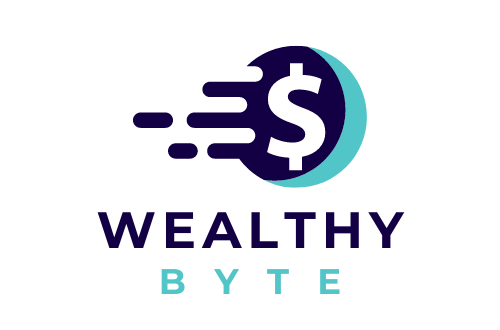
Buying a new home is an exciting life event and a daunting financial undertaking. A mortgage, or home loan, typically makes the purchase possible by allowing borrowers to cover the expense—plus interest—over time.
Before taking the leap and committing to a mortgage, prospective homebuyers should compare their options and take steps to secure the lowest interest rates and most favorable terms possible. Steps like improving credit scores, leveraging mortgage points (discount points), overpaying down payments, and negotiating rates may help a person land the home of their dreams without breaking the bank.
Understanding mortgage terms and rates
Throughout the homebuying process, individuals are likely to encounter technical language about mortgage rates and more.
Understanding key terms is essential for securing the best rates. The following are some common words or phrases connected to home loans.
● Interest rate: A mortgage’s interest rate1 is the amount a borrower spends per year to borrow the money, expressed as a percentage of the principal loan (the amount borrowed). Interest may be fixed, meaning it stays the same throughout the loan’s lifetime, or variable, meaning it fluctuates with changes in the market.
● Annual percentage rate (APR): While “APR” and “interest rate” may both be used for certain financial products, they have different meanings for mortgages. An APR includes not only the interest rate but also many mortgage-related fees and other costs.
● Mortgage term: A “term” is the lifetime of a mortgage. Borrowers make regular payments throughout the loan term. By the end of a term, the borrower must repay the mortgage in full, including all interest.
● Down payment: A mortgage down payment is the amount a borrower must pay upfront in order to secure the loan.
● Closing costs: Closing costs2 are the fees that a bank or another lender charges to complete your mortgage offer. These expenses may include origination fees, underwriting fees, processing fees, title insurance costs, attorney fees, and more. They typically amount to around 2% of a mortgage amount.
● Mortgage points: Mortgage points are a way to pay the lender extra funds to apply to the interest during the loan’s closing. Every mortgage point’s cost is equal to a percentage of the total loan amount, usually 1%. Each point usually lowers the monthly interest rate by .25%, but the amount may vary.
Improving creditworthiness
Mortgage rates typically vary depending on borrowers’ creditworthiness. Credit score, income, and debt-to-income ratio play some of the biggest roles in determining creditworthiness. Before applying for a mortgage, borrowers should take all necessary steps to improve creditworthiness:
1. Check credit report: A person’s credit reports with the major credit bureaus (Experian, Equifax, and TransUnion) contain information about each of their credit lines and loans. Credit reports are available from each major credit bureau at annualcreditreport.com.
2. Report any mistakes in a credit report: Errors in a credit report, like missing payments, could have a major impact on creditworthiness. Addressing those errors could improve credit scores quickly.
3. Pay down debts: Paying down outstanding debts, like credit card balances or loans, could improve two important measures – debt-to-income ratio and credit utilization ratio. A debt-to-income ratio measures the amount of debt a person has in comparison to their overall income. Lenders often assess debt-to-income ratio to determine mortgage rates. A credit utilization ratio measures the total amount of available credit a person has and how much of it they are using, and accounts for 30%3 of a person’s credit score.

4. Practice responsible credit habits: Payment history makes up the largest portion of a person’s credit score. Making on-time payments on all open credit accounts and maintaining a low credit utilization ratio shows lenders that a person can handle credit.
Saving for a down payment
It’s a good idea to begin saving for a down payment long before starting the homebuying process. That’s because, typically, the larger the down payment a person can make up front, the lower their monthly payments and long-term costs. A higher down payment reduces a borrower’s overall loan amount, which, in turn, lowers the interest. Mortgage points may likewise bring down the mortgage interest rate, increasing savings.
Lenders may require borrowers to purchase private mortgage insurance (PMI) to cover any financial losses if the borrower fails to make payments and the house is foreclosed. One way to avoid this extra expense is by offering a significant down payment—typically at least 20%4.
Lenders typically require PMI from borrowers who put less than 20% down on a conventional loan.
Saving for a down payment takes careful planning and discipline, but borrowers may find the benefits are worth the extra effort.
Comparing lenders
Borrowers looking to secure the best terms should compare lenders and loan offers. Different lenders may offer a wide range of interest rates, fees, and terms, which could translate to major differences in the amount a person pays for their home over time. Prospective borrowers may want to compare the following factors:
● Interest rates: Borrowers should seek low rates and consider whether a lender offers fixed or variable interest for the desired mortgage product.

● Terms: A loan’s term determines monthly payment amounts and how long it will take for a homebuyer to own their house outright. The best term likely depends on a person’s financial situation, as well as their plans for the property.
● Closing costs: Lenders may charge a wide variety of fees, which play a significant role in the total cost of a mortgage.
Seeking pre-approval from multiple lenders could help borrowers find the best fit. The mortgage pre-approval process includes a hard credit pull and some underwriting, so it offers a reasonably accurate indication of potential terms and rates. Prospective borrowers may typically apply for pre-approval online, over the phone, or in person.
Negotiating your mortgage
Borrowers may not always realize they have the option to negotiate their mortgage, but negotiating could lead to better terms and rates. Before negotiating, prospective borrowers should conduct some research. It’s important to have extensive knowledge of one’s own financial standing, competing mortgage lenders, and overall market conditions. Armed with this information, borrowers may use multiple pre-approved offers as leverage to secure the lowest interest rates and most favorable terms available.
Effective communication and a willingness to walk away from less favorable deals are crucial. By remaining persistent and well-informed, borrowers could save thousands of dollars over the life of the mortgage.
Disclaimer: Article content is intended for information only. It may not reflect the publisher nor employees’ views. Consult a mortgage professional before making financial decisions. Publishers or platforms may be compensated for access to third party websites.















